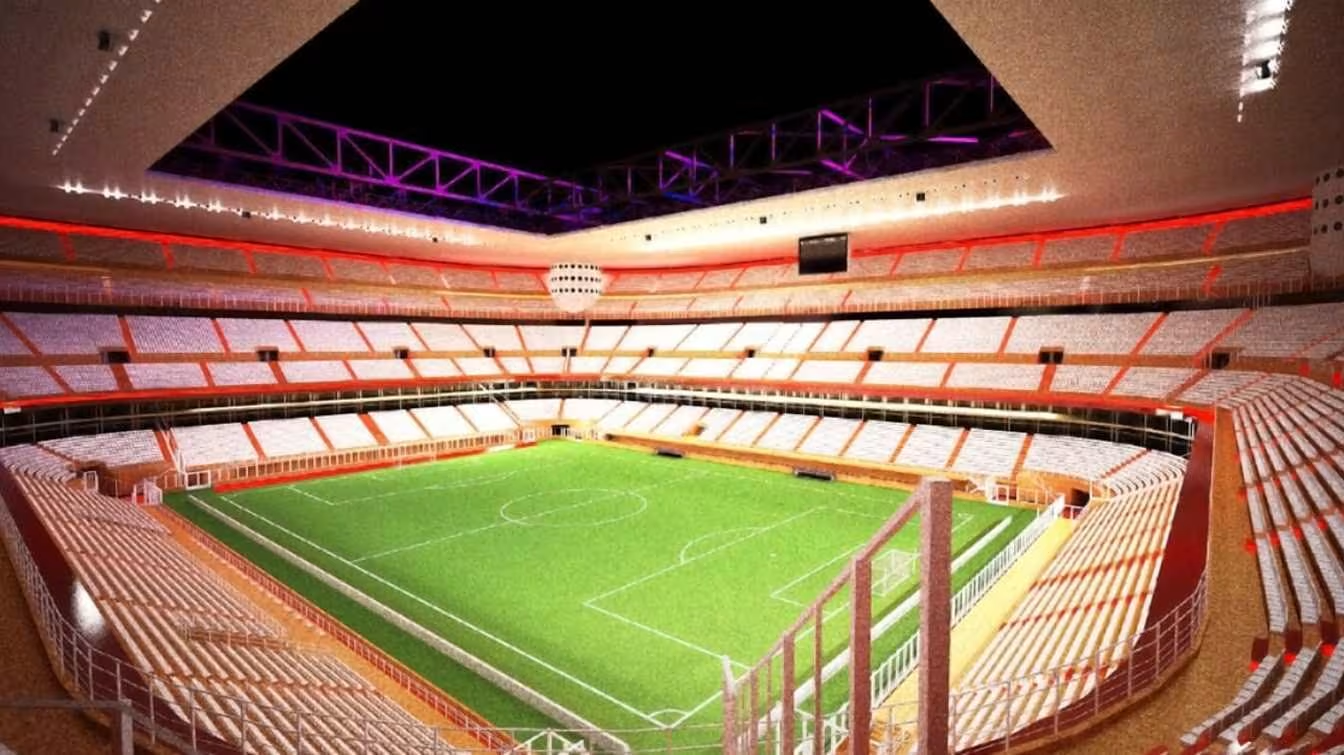Subtotal $0.00
San Siro: All you need to know about new Milan and Inter stadium – key dates, capacity and more
In Milan, the San Siro stadium redevelopment is moving forward after the Milan City Council approved the sale of the area to AC Milan and Inter Milan. The plan targets a modern, 71,500-seat arena that preserves the site’s historic aura while meeting today’s safety, accessibility, and matchday experience standards. The collaboration signals a long-term commitment to revitalizing an urban hub at the heart of Milan’s sporting identity. The project is explicitly framed as a chance to deliver a world-class home that can compete with Europe’s top stadiums. San Siro stadium redevelopment aims to balance culture with cutting-edge technology, hospitality, and mixed-use elements that extend beyond game days. As the timetable develops, clubs, fans, and city officials will monitor design proposals, financing talks, and regulatory approvals that will shape the project for decades to come.
Background and ownership
Public mandate and sale of the site
The Milan City Council’s decisive move to authorize the sale of the San Siro area to the two clubs represents a watershed for the project. The arrangement is designed to keep control in the hands of the city while enabling private investment in a stadium that aspires to become a global benchmark. The San Siro stadium redevelopment framework prioritizes safety, accessibility, and a vibrant matchday atmosphere, with protections for the venue’s historic footprint and cultural significance. Public oversight and transparent procurement processes are central to the deal, ensuring community benefits alongside football ambition.
Partnership between clubs and the city
The collaboration between AC Milan, Inter Milan, and the city administration is meant to deliver a unified governance model for planning, financing, and operations. By pooling expertise from both clubs with municipal oversight, the project aims to create a home that satisfies European standards and serves as a civic asset. The arrangement also seeks to stimulate local business around derby days and beyond, reinforcing the area as a year-round destination. For supporters, these arrangements are a critical test of whether the redevelopment can preserve San Siro’s emotional resonance while embracing modern amenities.
Capacity and design
Capacity goals and design priorities
The plan envisions a stadium with approximately 71,500 seats, a figure that positions it among Europe’s larger club venues. The San Siro stadium redevelopment emphasizes compact sightlines, flexible hospitality spaces, and a bowl that heightens atmosphere without sacrificing safety or comfort. Designers are exploring iterations that balance the tall, iconic silhouette with contemporary materials and energy efficiency. The aim is a stadium that remains intimate on derby nights and welcoming to international fans visiting for European ties.
Technology, safety, and accessibility
Modern safety protocols, smart-ticketing, and seamless crowd movement are non-negotiable aspects of the project. Accessibility will be upgraded with barrier-free routes, extended concourses, and better sightlines for spectators with reduced mobility. The redevelopment also seeks to incorporate sustainable features, digital wayfinding, and data-driven operations to enhance security and fan engagement on all matchdays.
Key dates and milestones
Recent approvals and sale
The city’s approval of the sale is a milestone that clears the way for detailed design work and procurement. This phase triggers a sequence of milestones, including the selection of architects, contractors, and potential partners for financing. While specific dates remain fluid, the consensus view is that planning, consultation, and early construction can proceed in parallel as regulatory approvals unfold. The San Siro stadium redevelopment is framed as a multi-year project rather than a single build, reflecting the complexity of preserving history while delivering modern facilities.
Expected construction timeline
Industry expectations set a long horizon, with readiness targeted for the early 2030s, often cited as 2031 in initial planning discussions. The timeline accommodates phased construction to minimize disruption to current club activities and local life. Financing packages, design competitions, and partnerships will shape the pace, but momentum remains evident as the clubs and city align on a shared vision for a world-class home.
Impact on clubs and fans
Derbies, matchday experience
For supporters, the San Siro stadium redevelopment promises a markedly enhanced matchday experience. Expect improved circulation, upgraded hospitality zones, and faster access routes that reduce congestion during peak periods. The design prioritizes the visceral intensity of the Milan derbies while delivering modern conveniences that international fans expect on European nights. The goal is to keep the stadium’s character intact even as technology and comfort rise to new levels.
Economics and local area
Beyond football income, the project could catalyze local development, transport enhancements, and non-match-day activity around the venue. Mixed-use elements on the broader site may include retail, restaurants, and community spaces that remain active on non-matchdays. If executed well, the San Siro stadium redevelopment could become a model for balancing football heritage with urban vitality, boosting the city’s profile and offering tangible benefits to residents, businesses, and visitors alike.
What comes next
Financing and partnerships
With the sale in place, financing strategies will center on a mix of equity from the clubs, bank loans, and potential sponsorship deals. The selection of design partners will be a key determinant of cost, schedule, and architectural impact. The San Siro stadium redevelopment demands careful risk management to preserve heritage while inviting innovation, ensuring a financially sustainable project that can stand the test of time.
Broader site usage and legacy
Long-term plans extend beyond the stadium bowl to create a lasting legacy for Milan. This includes enhanced public transport access, community facilities, and spaces that host events beyond football. The redevelopment seeks to maintain the emotional bond fans have with San Siro while transforming the area into a year-round destination, strengthening Milan’s sporting identity and regional economy.
For more context, see official updates from the AC Milan and Inter Milan, as well as public information from the Milan City Council. Additional perspectives on European stadium standards can be found through UEFA.




